Smith Group tradition is to serve our newly defended doctoral students a cake. Though they started out simple, the decorations have gotten more elaborate with time. Taken together, one can see the evolution of Smith group projects over the years on these confections.

Dr. Kara Harmatys’ cake features a mouse tumor being ablated with a near-infrared laser.

Leishmaniasis parasites, cationic bacteria, and a mouse can all be seen on Dr. Doug Rice’s cake.

Dr. Kasey Clear’s cake has a mouse bearing a tumor, which is being imaged with a zinc-dipocylamine conjugated fluorophore.

Dr. Evan Peck’s cake is showcasing Synthavidin technology (aka SynthEvadin Pecknology) with iminodiacetate groups for bone imaging.

A flu detection system which utilizes Synthavidin technology and a system for gold capture are highlighted on Dr. Wenqi (Vince) Liu’s cake.

Dr. Scott Shaw’s cake features a Synthavidin functionalized liposome membrane, some RGD-targeted probes, a cancer cell filled with those probes, and a microscope to image it all.
 On Dr. Felicia Roland’s cake, mice are being injected with a ZnDPA Synthavidin probe. A squaraine coated gold core nanoparticle, a croconaine dye, and a squaraine dye are also seen.
On Dr. Felicia Roland’s cake, mice are being injected with a ZnDPA Synthavidin probe. A squaraine coated gold core nanoparticle, a croconaine dye, and a squaraine dye are also seen.

Dr. Tia Jarvis’ cake features unsymmetric, solvatochromic squaraine dyes.
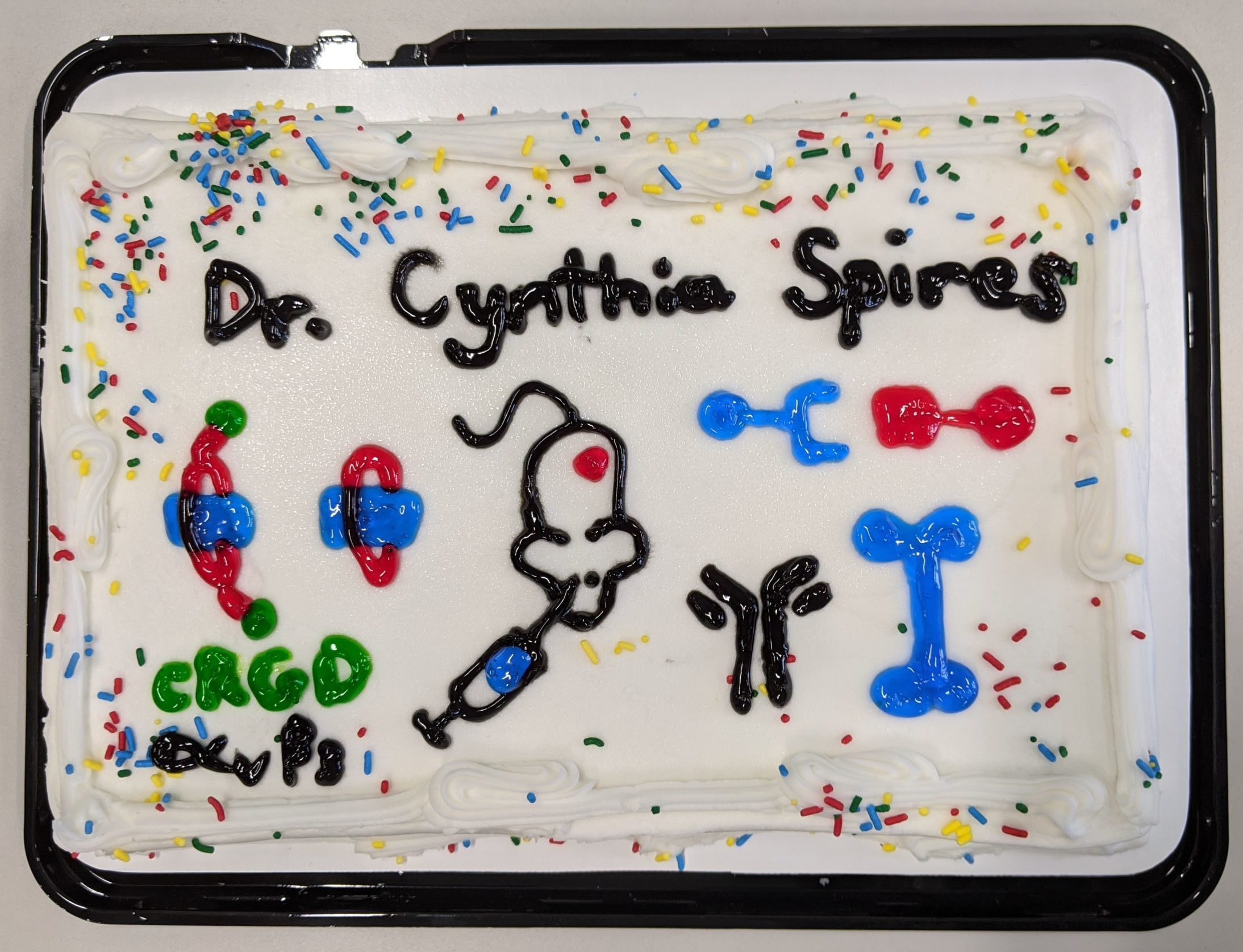
A tumor-bearing mouse is being injected with both a cancer-targeting probe and a control non-targeting probe for paired agent imaging on Dr. Cynthia Spires’ cake. Also referenced is her work with antibodies, bone-targeting probes, and non covalent click chemistry.
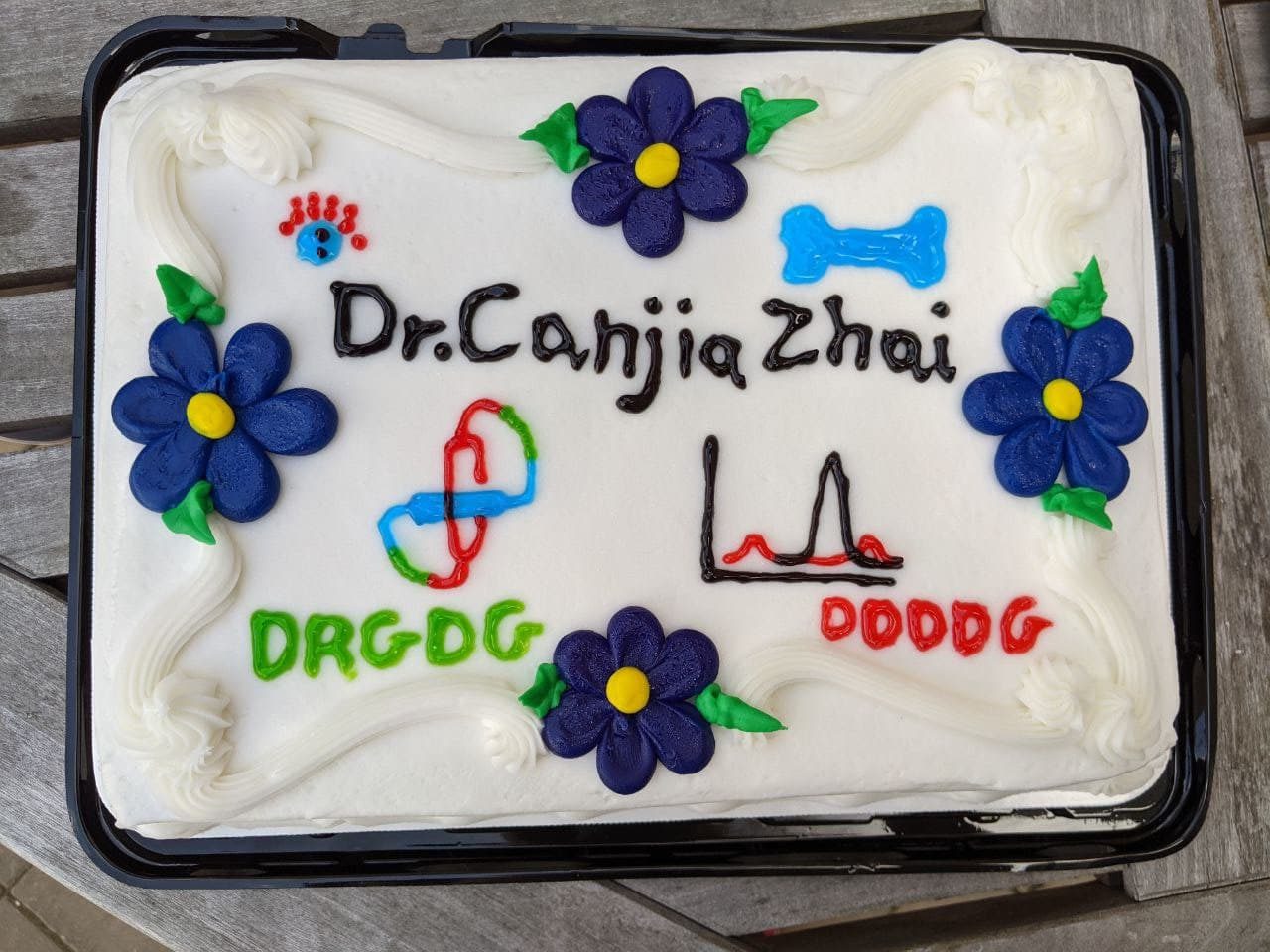
Dr. Canjia Zhai’s cake features her figure-eight squaraine rotaxane peptide probe, which could be used to for a variety of applications such as bone and cell targeting. Also represented is the unusual aggregation displayed by these probes in aqueous solvents.
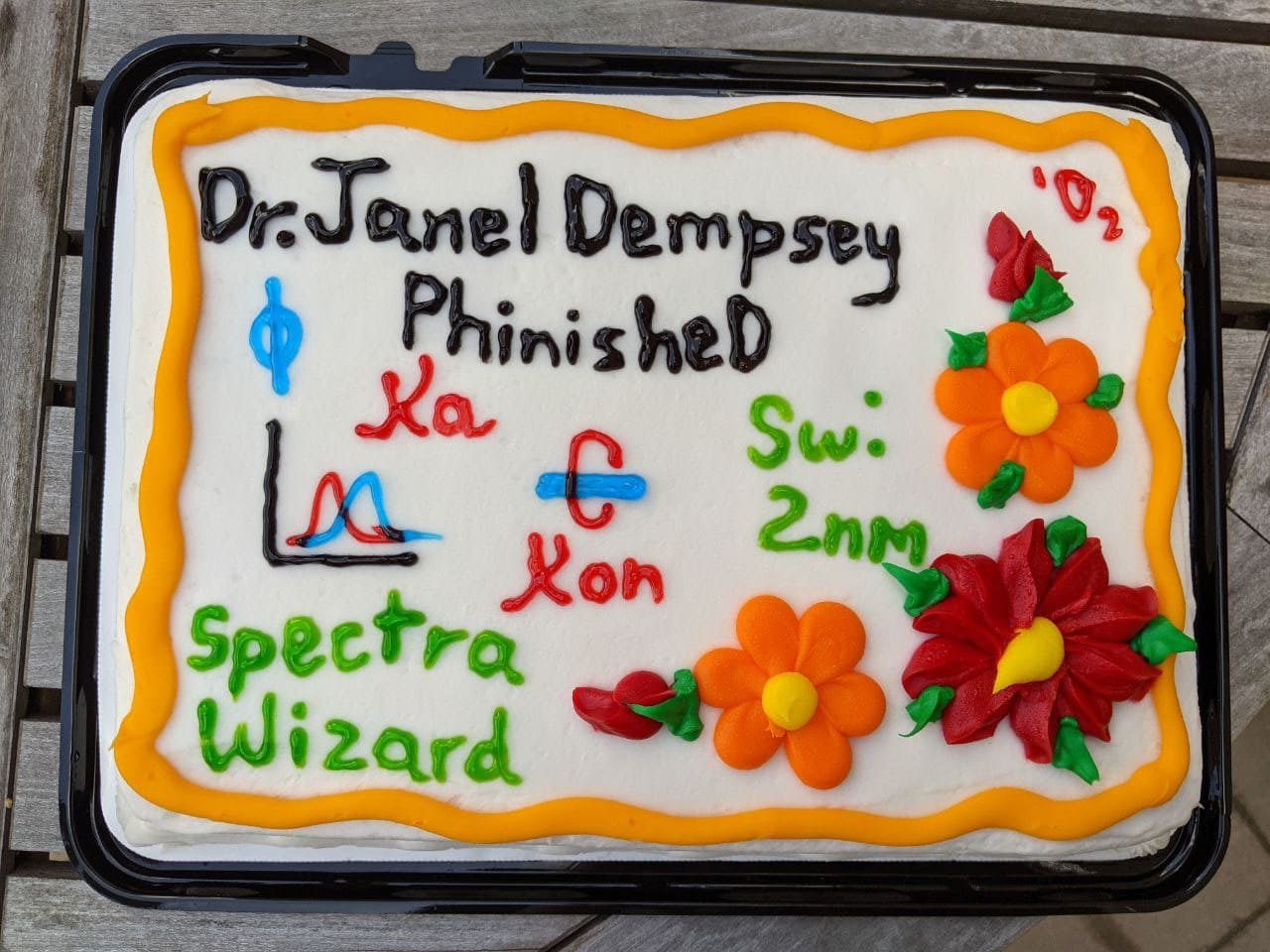
Spectroscopy is the focus of Dr. Janel Dempsey’s cake. Her work in studying the threading of tetralactam macrocycles with squaraine dyes is referenced with the symbols for things like the association constant and quantum yield.
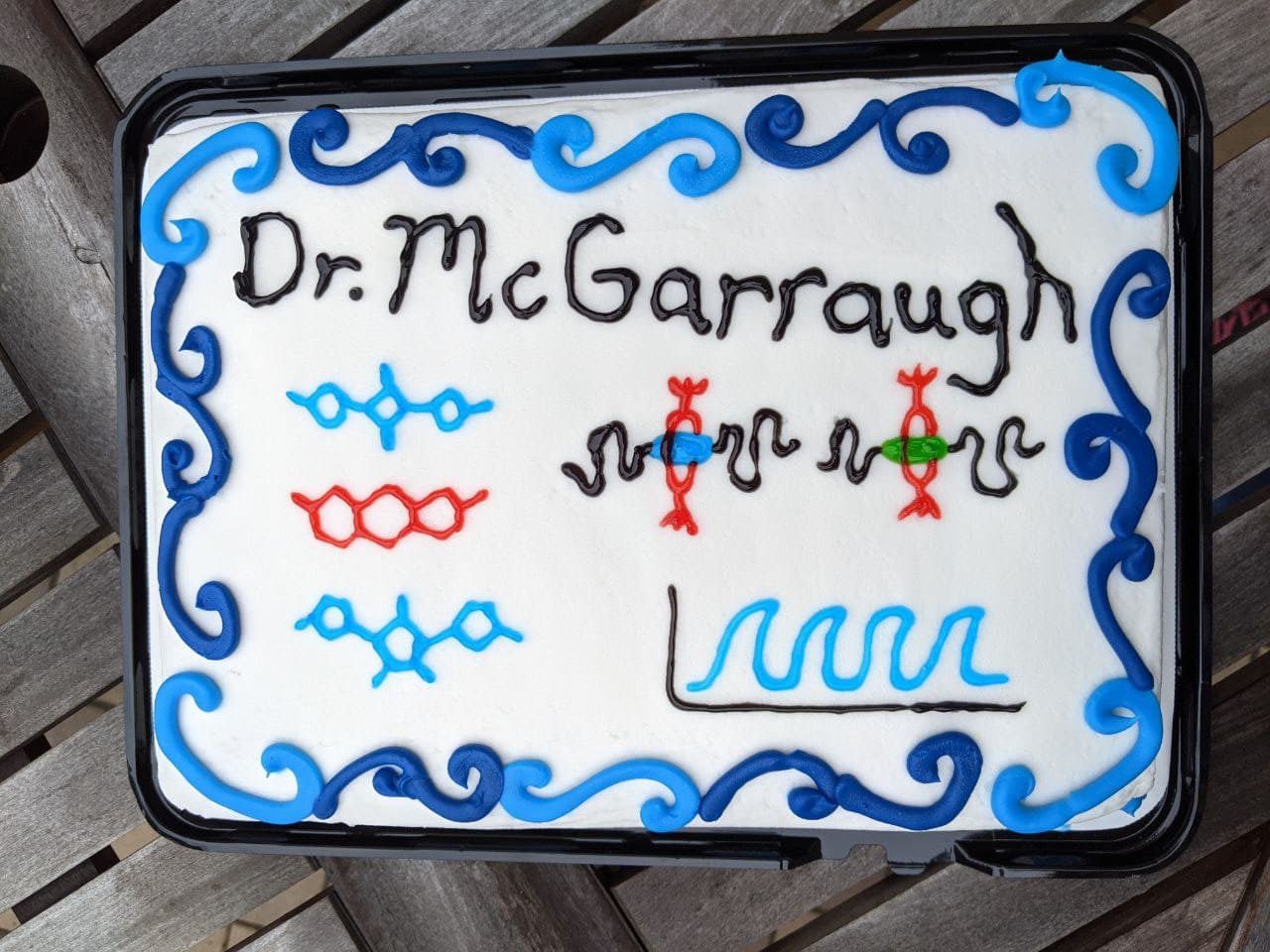
Dr. Hannah McGarraugh’s cake displays three types of dyes she worked with, squaraines, resorufin, and croconaines. Her photothermal heating experiments with croconaine rotaxanes are represented by a diagram of the heating/cooling cycles.
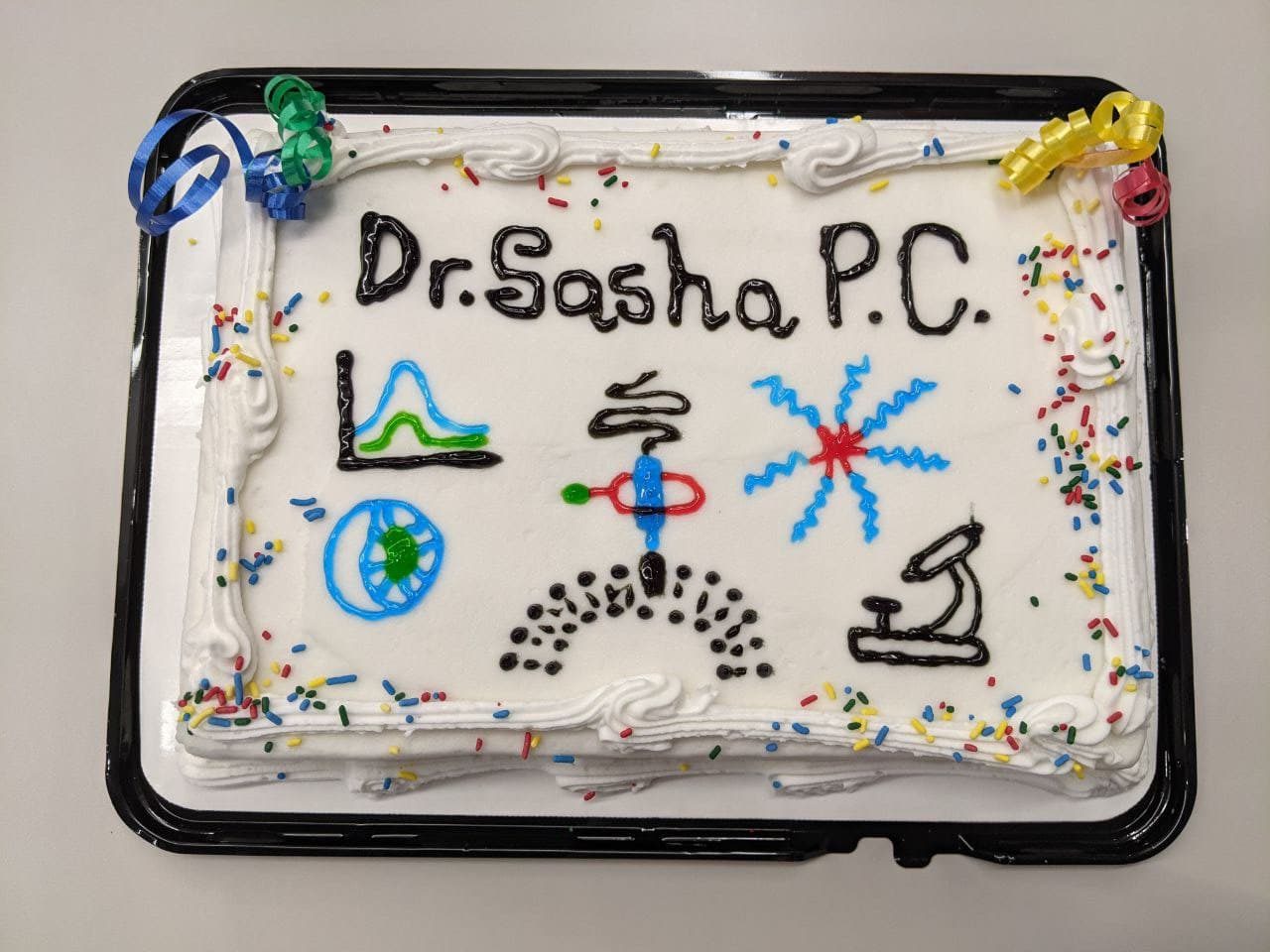
Dr. Sasha Padilla-Coley’s cake references her work with polymeric micelles, targeted liposome-based delivery systems, and fluorescence microscopy.
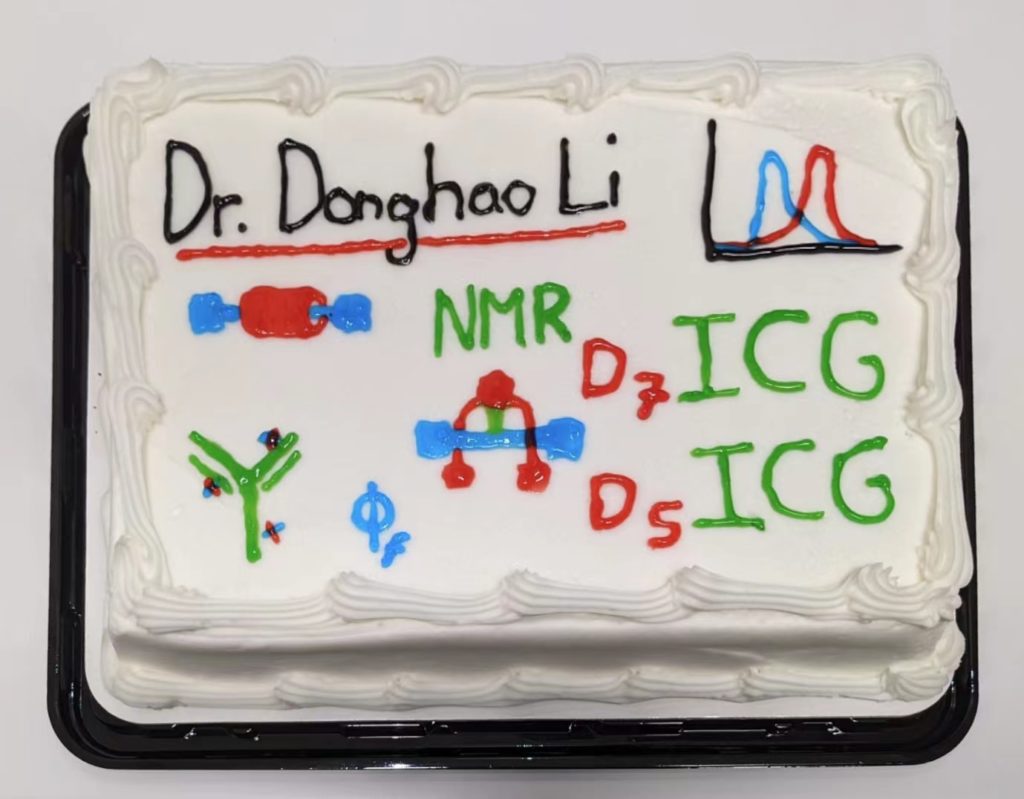
Dr. Donghao Li’s cake shows his work on rotaxanes, shielded NIR fluorescent dyes, deuterated Indocyanine Green (ICG) in both chemistry and their biomedical applications.
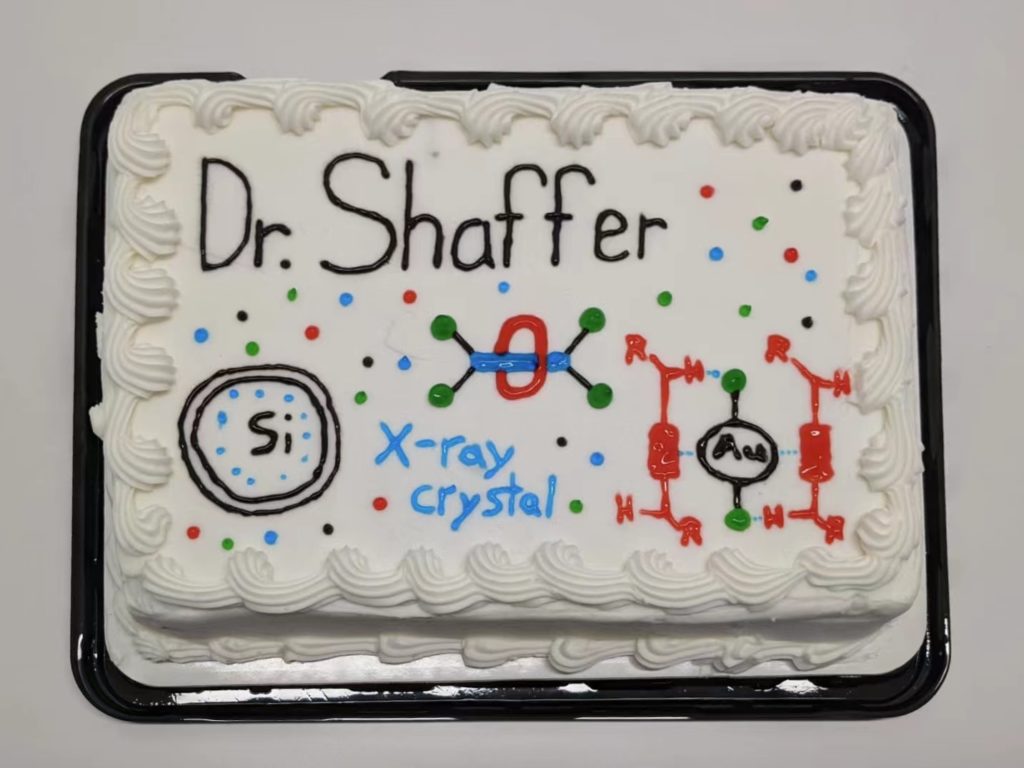
Dr. Cassandra Shaffer’s cake displays her design of squaraine rotaxanes, porous silica nanoparticles, and gold(III) coordination complexes which can capture gold and form co-crystals.
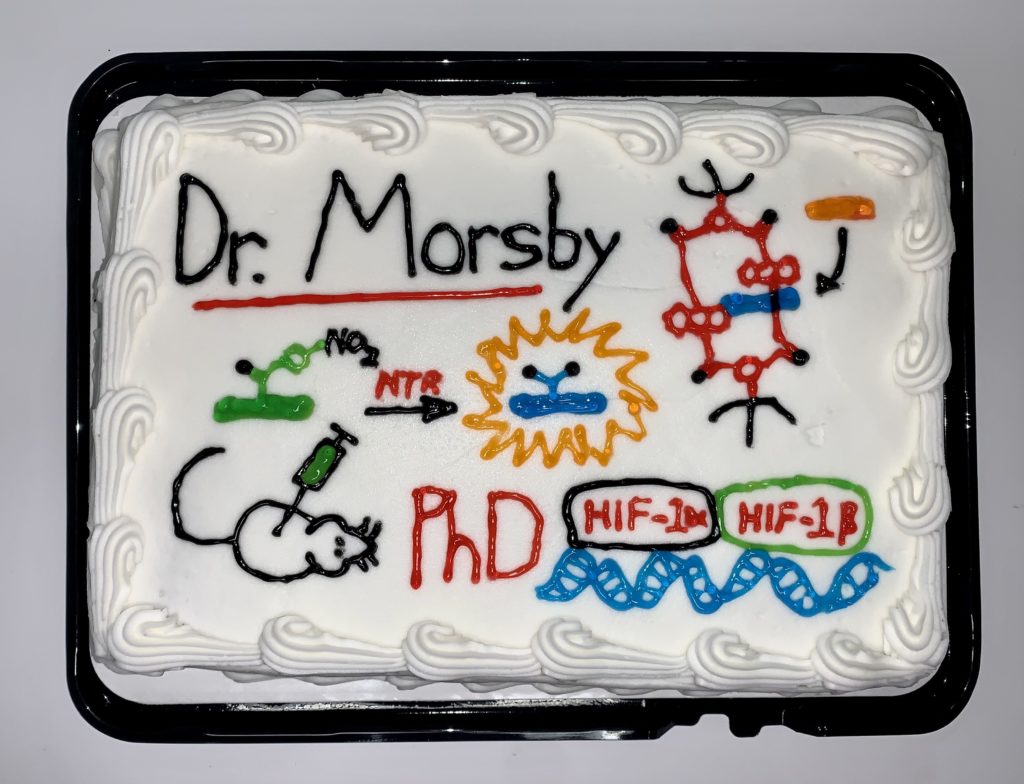
Dr. Janeala Morsby’s cake references her work with supramolecular resorufin colorimetric indicators and fluorescent probes for cell hypoxia imaging.
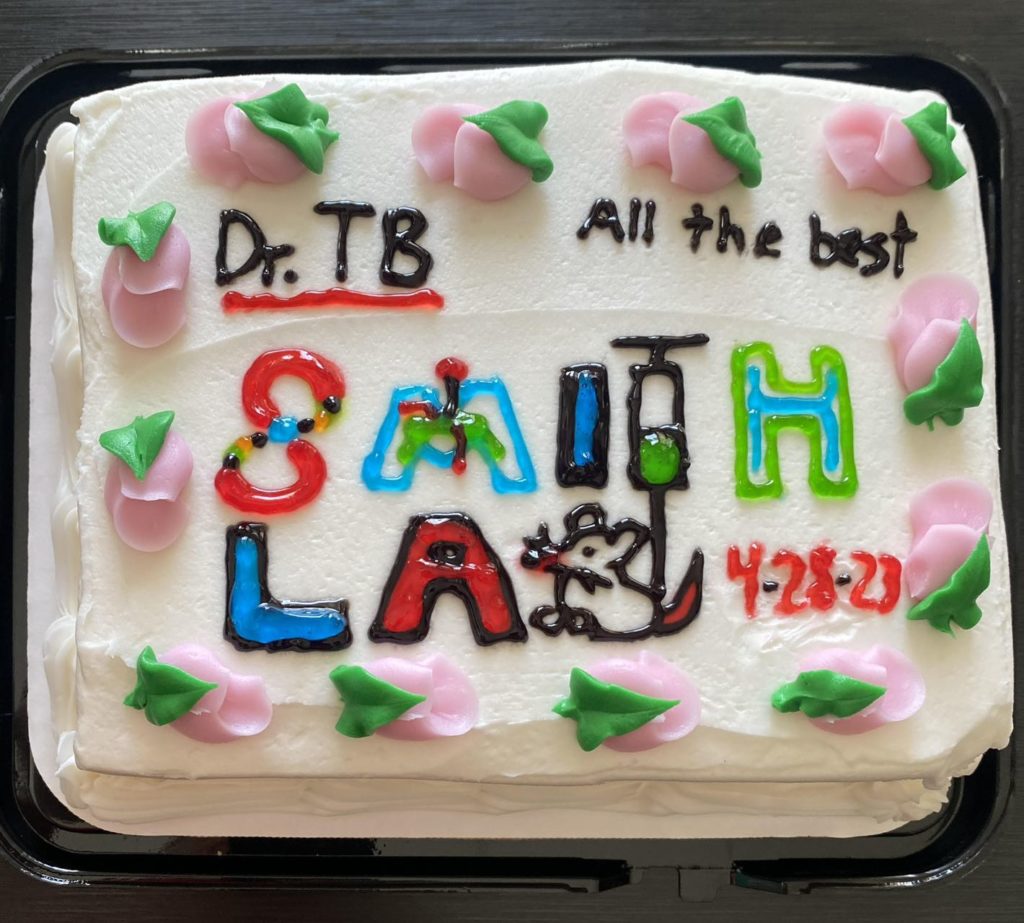
Mrs. Theresa Bollinger’s cake was decorated to honor her invaluable contribution to the Smith research group over the past twenty years, as well as her kindness to every generation of group members.
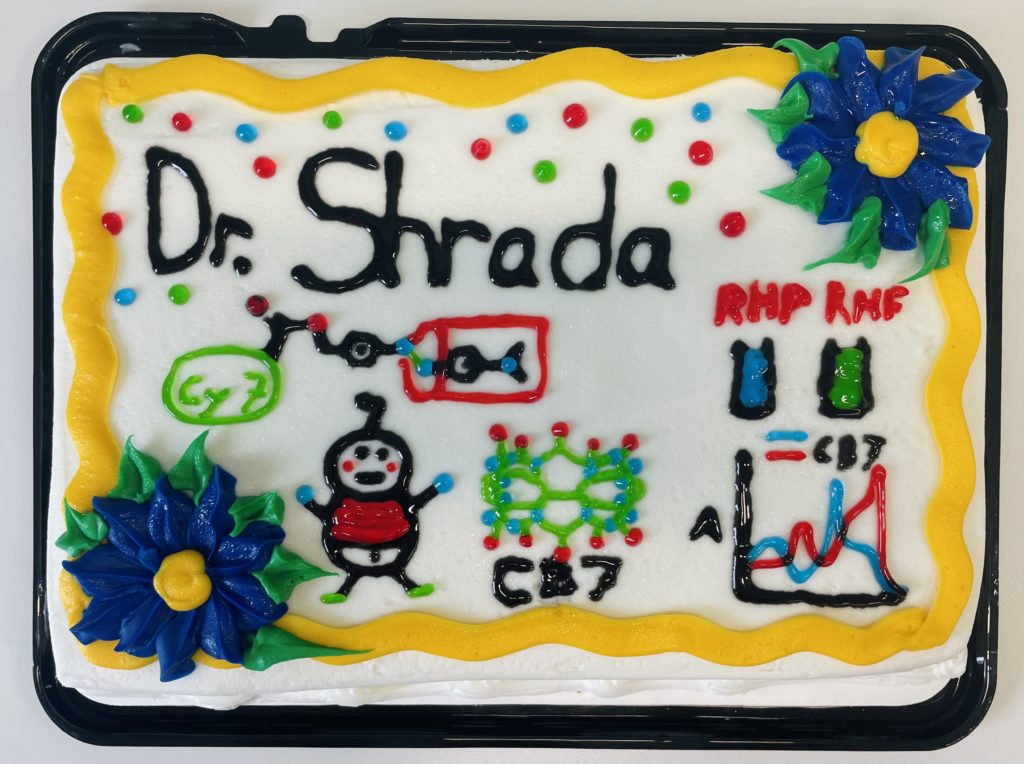
Dr. Shradha Kommidi’s cake displays her design of cucurbit[7]uril (CB7)-encapsulated azobenzene-cyanine conjugates, esterase-responsive probes, as well as her lovely baby daughter born in her Ph.D. period.
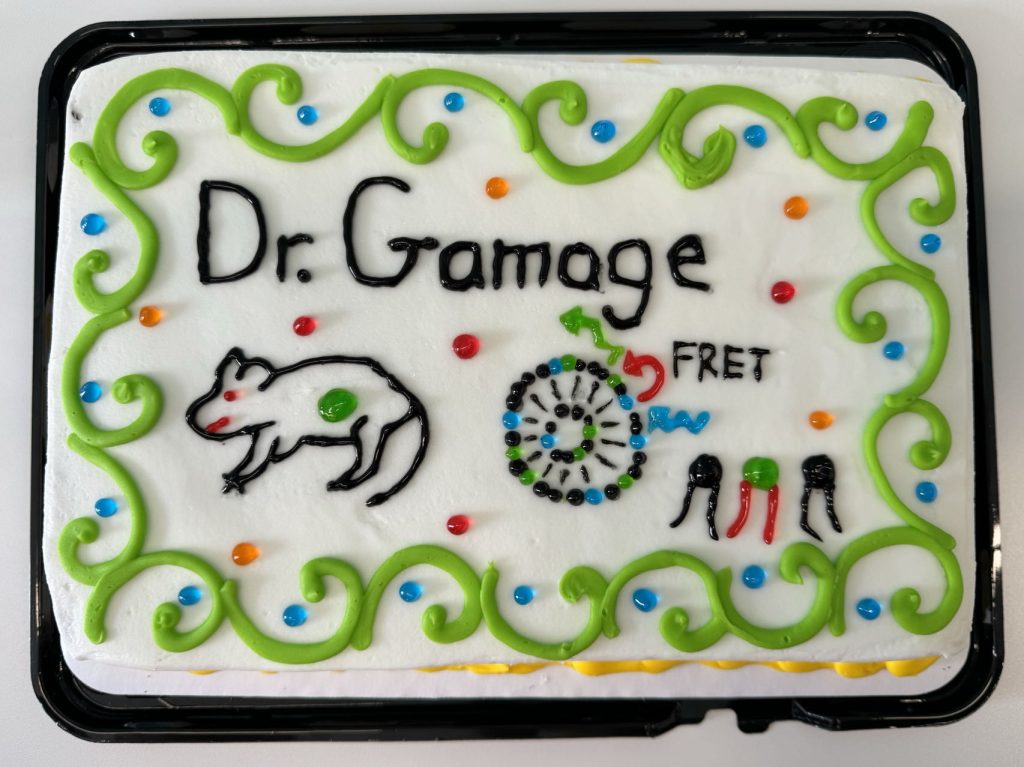
Dr. Rananjaya Subash Gamage’s cake references his work on precise NIR imaging of tumors, and liposomes-to-albumin transfer of Indocyanine Green (ICG).
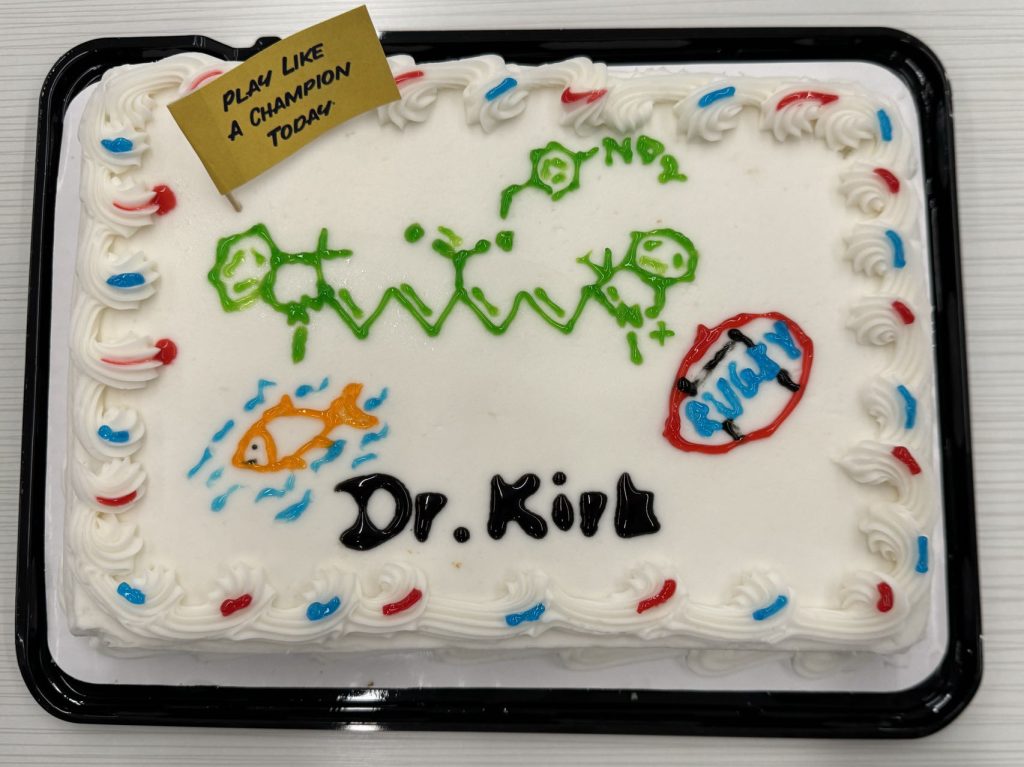
Dr. Kirk Atkinson’s cake features heptamethine cyanine prototype for imaging cell hypoxia.

